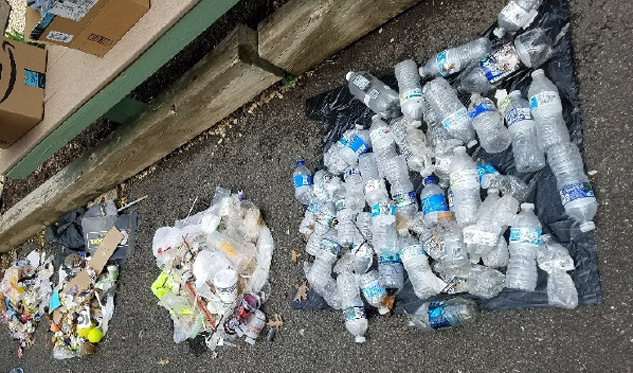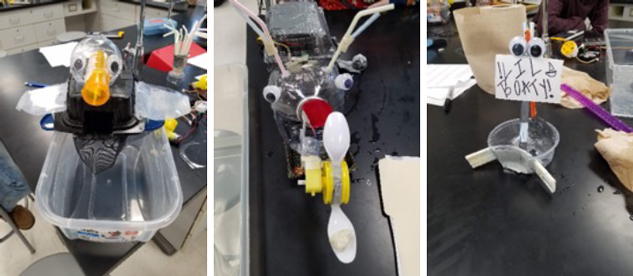Earth Day Engineering: Mr. Trash Wheel and More Classroom-Ready Activities To Use With Your Students
Every year for the last 52 years, Earth Day has been on April 22. And in fact, "Earth Week" is celebrated the entire week leading up to Earth Day. Earth Day gives us an opportunity to cherish all that our home provides. This week also provides an opportunity to reflect on our own actions that may be harmful to human health and diminish our resources.
Our students will be the next generation of problem-solvers. We need to instill the knowledge and the skills to adapt to change and find the solutions in an ever-changing world. Building STEM skills is a way to empower students to make connections between content areas and to be creative. When students engage in engineering design activities within their content area classes, their ideas can be limitless.
Using real-world environmental issues is an easy way to get students engaged and thinking critically about problems that may be affecting their own communities. A task as simple as walking around a schoolyard could have students realizing their school might have an issue with trash. This can lead to student action of campus-wide, or even community-wide, trash cleanups.

Here is a great activity to try with your students:
#1. Mr. Trash Wheel Project
As a former classroom teacher, I found that using issues my students can visualize in their own communities really engages them and led me to create a project based around the problem of plastic pollution. I was inspired by another innovative invention called Mr. Trash Wheel, which is found in Baltimore’s Inner Harbor and prevents trash that runs off the Jones Falls Watershed from getting into the harbor and, therefore, the Chesapeake Bay. He is one of four trash wheels in the area run by the Healthy Harbor initiatives of the Waterfront Partnership of Baltimore.
I knew I could take this charismatic and innovative machine and use it to engage my students in a real-world problem of single-use plastics while building skills in engineering design. The task was to build their own trash interceptor while bringing awareness to the effects of single-use plastics on watersheds. To further tie in single-use plastics, the students had to build their model using only single-use plastics that they collected over several weeks. A 60-second public service announcement (PSA) would also be developed during the two-week-long project.
We used TI-Nspire™ CX II graphing calculators, along with TI-Innovator™ Hubs, to control DC motors. Students learned to use TI-Basic and write simple commands to make the motors move at the speed and duration they needed.
The results:

The students amazed me with their creativity. Each project had its own personality. They worked effectively in groups and were actively engaged during the entire four days of building, designing and refining their projects. On the last day, a few groups were not quite ready to showcase their project. They had a little more tinkering to do and begged me to shorten their review for their final exam in favor of finishing their trash wheel. Now, when upper-level ninth grade students ask you something like this, you know they are engaged in their learning!
Are you interested in trying out a similar project with your students? In 2022, I had the opportunity to present a workshop on this at NSTA in Houston with my good friend and colleague Stacy Thibodeaux. Check out the full set of materials that we provided to workshop participants so they could take home and use the project with their students. Or, for a quick preview, check out just the student activity sheet.
Here are some other interesting Earth Day activities you can try with your students:
#2. Straw Shock
Your students will be shocked to discover how many straws are used each day in the U.S. Watch this on-demand webinar to explore an activity calculating the number of times straws would wrap around the Earth, the volume of plastic used each year, and more. Download the activity, including student and teacher notes.
#3. The Garbage Problem
In this activity for the TI-84 Plus CE graphing calculator, students will develop an understanding of the environmental impact of trash accumulation and the need for a plan to deal with potential garbage problems.
#4. Smart Irrigation System
Students are challenged to use science and technology to design and build a system that utilizes a limited amount of water in a “smart” way to grow crops. Project requires a TI-Innovator™ Hub and is available for TI-Nspire™ CX II or TI-84 Plus CE graphing calculators.
So, this Earth Day, think creatively! See what innovative ideas your students can come up with. You never know how these experiences in the classroom may spark an interest in a student who may create the next important solution for our planet.
About the author: Jessica Kohout is a National T³™ instructor and enjoys introducing students to STEM through environmental issues. She is the Youth Climate Institute Manager at the Howard County Conservancy where she develops programming for high school students and mentors the STEM Action Team. Prior to this, she taught high school Biology for 17 years. In or out of the classroom, Jessica believes that teaching students STEM skills along with collective action are the ways to improve the future for all. Follow her on Twitter and Instagram @MrsKohout.
Tagcloud
Archive
- 2025
- 2024
-
2023
- January (3)
- February (3)
- March (5)
- April (3)
- May (3)
- June (3)
- July (2)
-
August (6)
- 5 Ways to Spruce Up Your Classroom for Back to School
- Day of the Dog: Which Dog Is Roundest?
- Women Who Code: A TI Intern’s Fascinating STEM Journey
- 6 Sensational TI Resources to Jump-Start Your School Year
- 3 Back-to-School Math Activities to Reenergize Your Students
- A New School Year — A New You(Tube)!
- September (2)
- October (3)
- November (1)
- 2022
-
2021
- January (2)
- February (3)
- March (5)
-
April (7)
- Top Tips for Tackling the SAT® with the TI-84 Plus CE
- Monday Night Calculus With Steve Kokoska and Tom Dick
- Which TI Calculator for the SAT® and Why?
- Top Tips From a Math Teacher for Taking the Online AP® Exam
- Celebrate National Robotics Week With Supervised Teardowns
- How To Use the TI-84 Plus Family of Graphing Calculators To Succeed on the ACT®
- AP® Statistics: 6 Math Functions You Must Know for the TI-84 Plus
- May (1)
- June (3)
- July (2)
- August (5)
- September (2)
-
October (4)
- Transformation Graphing — the Families of Functions Modular Video Series to the Rescue!
- Top 3 Halloween-Themed Classroom Activities
- In Honor of National Chemistry Week, 5 “Organic” Ways to Incorporate TI Technology Into Chemistry Class
- 5 Spook-tacular Ways to Bring the Halloween “Spirits” Into Your Classroom
- November (4)
- December (1)
-
2020
- January (2)
- February (1)
- March (3)
- April (1)
- May (2)
- July (1)
- August (2)
- September (3)
-
October (7)
- Tips for Teachers in the time of COVID-19
- Top 10 Features of TI-84 Plus for Taking the ACT®
- TI Codes Contest Winners Revealed
- Best of Chemistry Activities for the Fall Semester
- Best of Biology Activities for the Fall Semester
- Best of Physics Activities for the Fall Semester
- Best of Middle Grades Science Activities
- November (1)
- December (2)
- 2019
-
2018
- January (1)
- February (5)
- March (4)
- April (5)
- May (4)
- June (4)
- July (4)
- August (4)
- September (5)
-
October (9)
- Art in Chemistry
- Which Texas Instruments (TI) Calculator for the ACT® and Why?
- Meet TI Teacher of the Month: Jessica Kohout
- Innovation in Biology
- Learning With Your Students
- A first-of-its-kind STEM strategy charts path to help educators
- #NCTMregionals Hartford 2018 Recap
- The Math Behind “Going Viral”
- Real-World Applications of Chemistry
-
November (8)
- Testing Tips: Using Calculators on Class Assessments
- Girls in STEM: A Personal Perspective
- 5 Teachers You Should Be Following on Instagram Right Now
- Meet TI Teacher of the Month: Katie England
- End-of-Marking Period Feedback Is a Two-Way Street
- #NCTMregionals Kansas City 2018 Recap
- Slope: It Shouldn’t Just Be a Formula
- Hit a high note exploring the math behind music
- December (5)
- 2017
- 2016
- 2015
